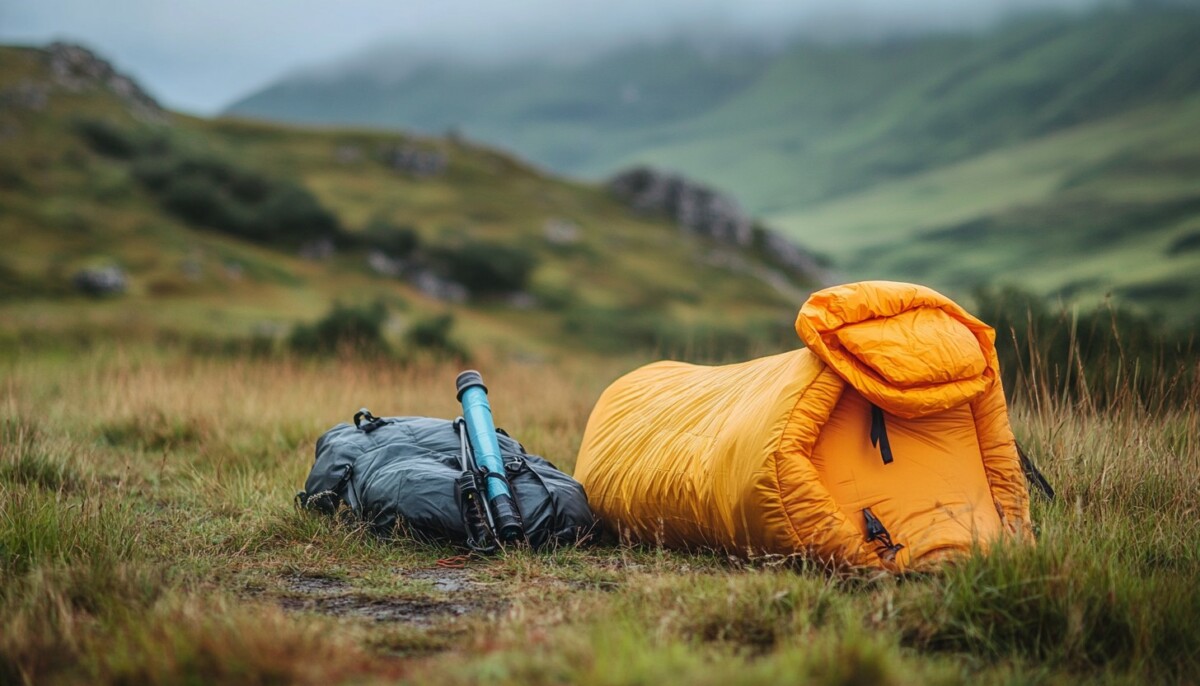Top Lightweight Sleeping Bags to Ditch Heavy Backpacks for Your Next Camping Adventure
If you’re a hiker, backpacker or camper, you know how important it is to have the right gear. And when it comes to sleeping bags, lighter is always better. Ultralight sleeping bags are becoming increasingly popular because they offer all the warmth and protection of traditional sleeping bags but without the added weight. In this blog post, we’ll explore everything you need to know about ultralight sleeping bags, including their benefits, how to choose the best one for your needs, and our top five picks for lightest sleeping bags on the market today.
Introduction to Ultralight Sleeping Bags
Ultralight sleeping bags are designed to be as lightweight as possible while still providing ample warmth and comfort. They typically use high-quality materials like down feathers or synthetic insulation to keep you warm in cold temperatures. The key difference between ultra-light sleeping bags and traditional ones is that they are much lighter, which makes them ideal for long hikes or camping trips where every ounce counts.
The Benefits of Using an Ultra-Lightweight Sleeping Bag
There are many benefits to using an ultralight sleeping bag over a heavier one. Here are just a few:
Lighter pack weight: As mentioned earlier, lighter is always better when it comes to hiking and camping gear. An ultralight sleeping bag can help reduce the overall weight of your pack, making it easier to carry and reducing fatigue.
Better warmth-to-weight ratio: Because ultralight sleeping bags are designed to be lightweight, they often have a higher warmth-to-weight ratio than traditional sleeping bags. This means that they provide more warmth per ounce of weight, making them ideal for colder climates.
More compressible: Another benefit of ultralight sleeping bags is that they are highly compressible, meaning they take up less space in your pack. This is especially useful if you’re traveling by plane or public transportation and need to keep your gear compact.
How to Choose the Best Lightweight Sleeping Bag for Your Needs
Choosing the best lightweight sleeping bag for your needs will depend on several factors, including the type of climate you’ll be camping in, the length of your trip, and your personal preferences. Here are some things to consider when choosing an ultralight sleeping bag:
Weather conditions: If you’re camping in a colder climate, you’ll want a sleeping bag with a lower temperature rating. On the other hand, if you’re camping in warmer weather, a lighter sleeping bag with a higher temperature rating may be more suitable.
Size and shape: Make sure the sleeping bag fits your body well and isn’t too tight or uncomfortable. Some sleeping bags are mummy-shaped, which can be more efficient at retaining heat but might feel restrictive to some people.
Material: Down feathers are generally considered the highest quality insulation material for sleeping bags, but they can also be expensive. Synthetic insulation is a cheaper alternative that works well in most situations.
Top 5 Lightest Sleeping Bags on the Market Today
- Sea to Summit Spark SPIII
- Weight: ~600g
- Insulation: 850-fill goose down
- Temperature Rating: ~2°C comfort
- Features: Roomy design, ultralight fabrics, two-way zip
- Kelty Cosmic Down 20
- Weight: Lightweight and compressible
- Insulation: 550-fill duck down
- Temperature Rating: 20°F (-6°C)
- Features: Water-resistant shell, draft tube, ergonomic footbox
- Feathered Friends Flicker UL Quilt 20
- Weight: 25 oz (~710g)
- Insulation: 950+ fill power goose down
- Temperature Rating: 20°F (-6°C)
- Features: Versatile quilt design, exceptional warmth-to-weight ratio
- Therm-a-Rest Parsec 20
- Weight: ~1kg (regular size)
- Insulation: Zoned down insulation
- Temperature Rating: ~-10°C comfort
- Features: Eco-friendly materials, synergy link connectors
- TETON Sports TrailHead Ultralight Mummy Bag
- Weight: Compact and lightweight (~1.1kg)
- Insulation: Synthetic fill
- Temperature Rating: +20°F (-7°C)
- Features: Durable ripstop shell, anti-snag zippers, draft tube .
Conclusion: Say Goodbye to Heavy Backpacks and Hello to a Better Hiking Experience
In conclusion, ultralight sleeping bags are becoming increasingly popular among hikers, backpackers, and campers due to their lightweight design and superior warmth-to-weight ratio. By choosing the best lightweight sleeping bag for your needs and packing it correctly, you can significantly reduce the weight of your pack and improve your overall hiking experience. So say goodbye to heavy backpacks and hello to a better hiking experience with an ultralight sleeping bag!

One Comment
Comments are closed.